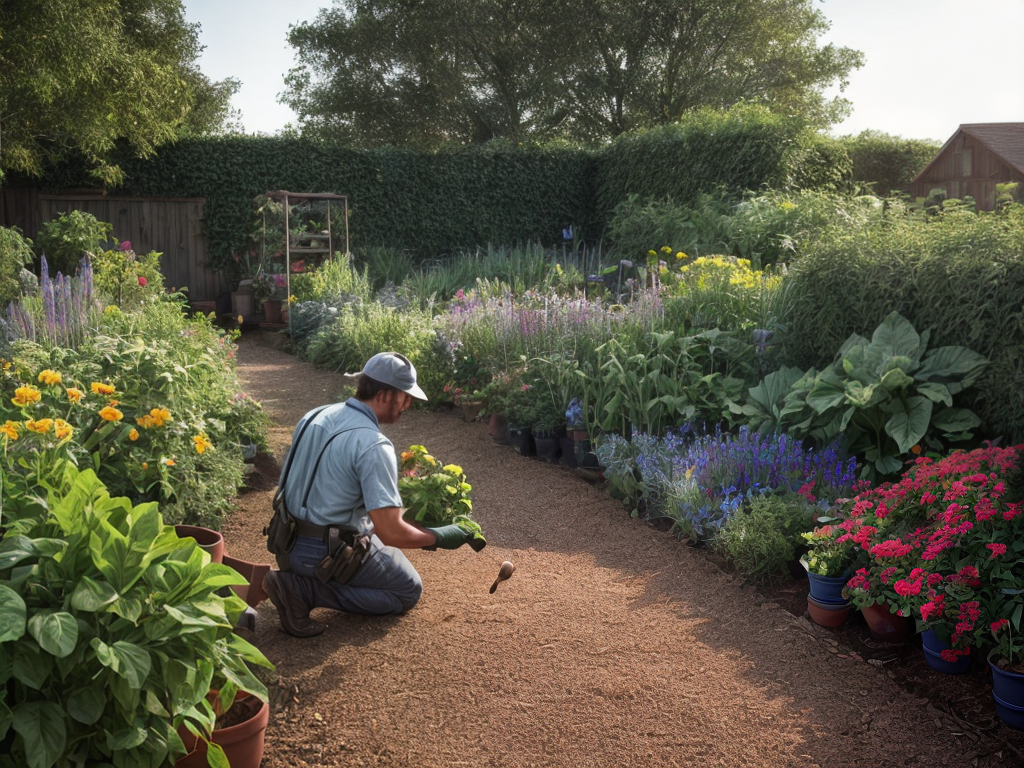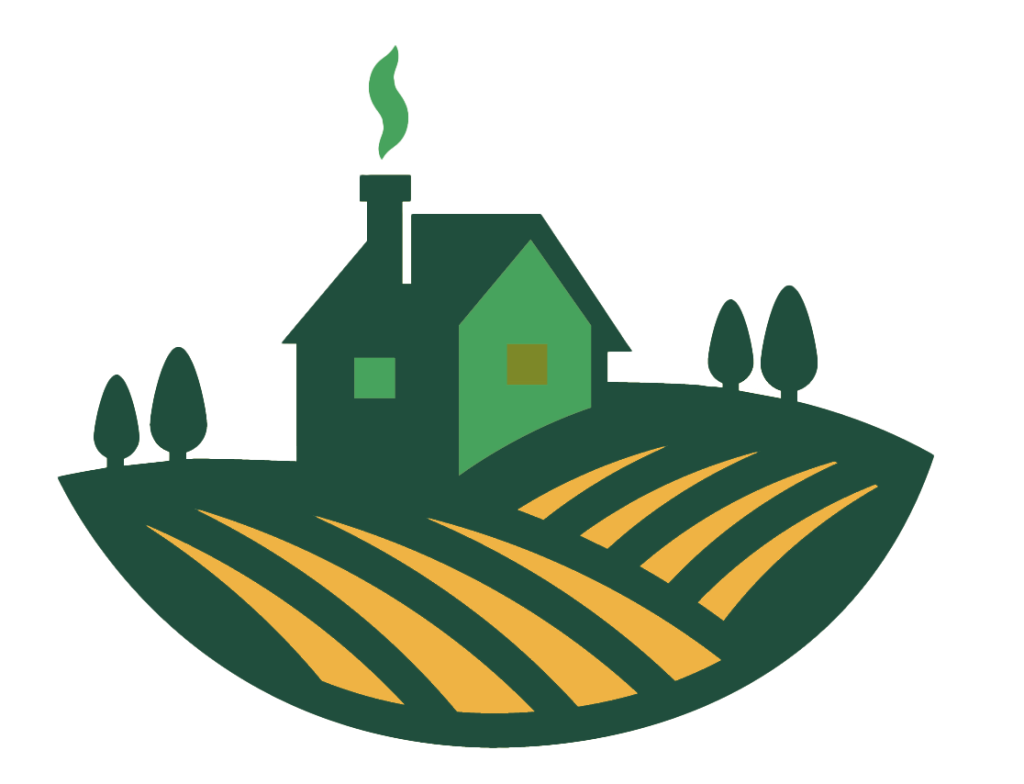
Did you know that pests can cause up to 40% of crop losses in organic gardens? But fear not, because I’ve got you covered with 11 natural pest control techniques that will help you keep your garden thriving. From companion planting to beneficial insects and physical barriers, these methods are effective and environmentally friendly. Say goodbye to harmful pesticides and hello to a healthier, pest-free garden. Let’s dive in and discover how to protect your plants naturally.
Companion Planting
In my organic garden, I rely on a variety of companion plants to naturally control pests. Companion planting involves growing different plants together that have mutual benefits for each other. One technique I use is intercropping, which is planting different crops in close proximity to maximize space and deter pests. For example, I plant marigolds among my vegetables because their strong scent repels insects like aphids and nematodes. Additionally, I utilize trap crops, which are sacrificial plants that attract pests away from the main crops. For instance, I grow radishes to lure flea beetles away from my lettuce. By strategically selecting companion plants and utilizing intercropping and trap crops, I am able to manage pests without relying on harmful chemicals in my garden.
Biological Control Methods
When it comes to natural pest control in organic gardens, biological control methods play a crucial role. One effective approach is using predatory insects to target pests. These insects, such as ladybugs and lacewings, feed on harmful insects and help maintain a balanced ecosystem. Another method is utilizing beneficial nematodes, microscopic organisms that can control pests like grubs and root maggots by infecting and killing them. Incorporating these biological control methods can help keep pests in check without the need for harmful chemicals.
Predatory Insects for Pests
One effective method to control pests in organic gardens is by introducing predatory insects. Predatory wasps, for example, are beneficial insects that can help eliminate common garden pests such as aphids, caterpillars, and flies. These wasps are natural predators and will actively hunt and feed on the pests, helping to keep their populations in check. Another way to attract predatory insects is by planting insect-repelling plants. These plants release natural compounds that repel pests and attract beneficial insects. Some popular insect-repelling plants include marigolds, lavender, and mint. By incorporating these methods into your organic garden, you can create a natural balance where predatory insects can thrive and help control pests without the need for harmful chemical pesticides.
Beneficial Nematodes for Control
I’ve found that incorporating beneficial nematodes into my organic garden has been an effective biological control method for pest management. These microscopic worms are natural predators of many garden pests, including grubs, caterpillars, and beetles. Here are three reasons why I believe beneficial nematodes are a great addition to any organic garden:
- They are safe for humans and pets: Unlike chemical pesticides, beneficial nematodes pose no threat to our health or the environment.
- They improve soil health: As they move through the soil, nematodes release beneficial fungi that help break down organic matter and enhance nutrient availability.
- They target specific pests: Different species of nematodes target specific pests, ensuring targeted control without harming beneficial insects.
Beneficial Insects
I’ve found that attracting beneficial insects to my garden is an effective way to naturally control pests. One of my favorite beneficial insects to utilize is ladybugs, as they are voracious predators of aphids and other garden pests. Additionally, it’s important to remember that beneficial insects, such as bees and butterflies, play a crucial role in pollination, so creating a garden environment that supports their presence is essential.
Attracting Beneficial Garden Insects
In my organic garden, I prioritize attracting beneficial garden insects to enhance natural pest control. By creating insect-friendly habitats, I can encourage these helpful insects to visit and thrive in my garden. Here are three ways I attract pollinator insects:
-
Planting native flowering plants: By including a variety of native flowers in my garden, I provide a food source for bees, butterflies, and other pollinators. These insects are essential for pollinating my crops and promoting healthy plant growth.
-
Providing water sources: I make sure to have small water features, like shallow dishes or birdbaths, in my garden to provide drinking water for beneficial insects. This helps them stay hydrated and encourages them to stay in my garden.
-
Avoiding pesticide use: To protect beneficial insects, I avoid using chemical pesticides in my garden. Instead, I focus on natural pest control methods, like companion planting and organic sprays, to keep pests at bay without harming the helpful bugs.
Utilizing Ladybugs for Pest Control
To effectively control pests in my organic garden, I rely on the natural predator, ladybugs. Ladybugs are beneficial insects that feed on aphids, mites, and other garden pests, making them an excellent natural pest control solution. Creating ladybug habitats is essential to encourage their presence in the garden. Ladybugs prefer areas with plenty of flowers, so planting a diverse range of flowering plants will attract and retain these helpful insects. Providing shelter, such as rocks or wooden structures, can also create ideal habitats for ladybugs. When it comes to releasing ladybugs into the garden, it is best to do so in the evening when the temperatures are cooler. Spray the plants with water before releasing them, as ladybugs are more likely to stay in a moist environment. Place the ladybugs at the base of plants or near the infested areas for optimal pest control. By utilizing ladybugs, I have been able to effectively manage pests in my organic garden while maintaining an environmentally-friendly approach.
Importance of Pollinator Insects
For my organic garden, pollinator insects play a crucial role in ensuring successful pollination and promoting plant diversity. Bees are one of the most important pollinators, as they transfer pollen from the male part of the flower to the female part, allowing plants to produce fruits and seeds. Butterflies also play a significant role in pollination, particularly for flowers that are brightly colored and have a sweet scent. These insects are attracted to the flowers, and as they feed on nectar, they inadvertently pick up and transfer pollen. Without these pollinators, many plants would not be able to reproduce, leading to a decline in plant diversity and overall ecosystem health. By creating a welcoming environment for bees and butterflies in your garden, you can support their important role in pollination and contribute to the sustainability of your organic garden.
Physical Barriers
A physical barrier is an effective method to prevent pests from accessing and damaging organic gardens. Physical barriers, such as fences, netting, and screens, create a physical obstacle that pests cannot penetrate. These barriers act as a protective shield around the garden, preventing pests from entering and causing damage to plants. By implementing physical barriers, you are practicing pest exclusion, which is an essential component of organic gardening. Fences can be used to keep larger pests, like rabbits and deer, out of the garden. Netting and screens can be placed over plants to deter smaller pests, such as insects and birds. It is important to ensure that the physical barriers are properly installed and maintained to ensure their effectiveness. Regular inspection and repairs are necessary to keep pests at bay and maintain the integrity of the barriers.
Natural Predators
I have found that attracting natural predators is an effective method for controlling pests in my organic garden. Not only does it help maintain a healthy balance in the ecosystem, but it also reduces the need for harmful pesticides. Here are some natural predators that have proven to be beneficial in my garden:
- Ladybugs: These tiny insects feed on aphids, mites, and other harmful pests, making them excellent natural pest control agents.
- Lacewings: Lacewing larvae are voracious eaters of aphids, mealybugs, and other soft-bodied insects, helping to keep their population in check.
- Praying mantis: Praying mantises are generalist predators that feed on a wide range of pests, including caterpillars, beetles, and grasshoppers.
To attract these helpful predators, I have implemented composting methods to create a nutrient-rich environment that supports their populations. Additionally, I use natural repellents such as neem oil and garlic spray to deter pests and keep them away from my plants. By encouraging natural predators and using organic pest control methods, I have been able to maintain a healthy and thriving garden without relying on harmful chemicals.
Homemade Pest Sprays
One effective method I have found for controlling pests in my organic garden is using homemade pest sprays. These homemade repellents are a great alternative to chemical insecticides, as they are safe for the environment and do not harm beneficial insects. One simple recipe I use is a mixture of garlic, onion, and cayenne pepper. I blend these ingredients together with water and strain the mixture into a spray bottle. This spray acts as a natural deterrent for many pests, including aphids, caterpillars, and beetles. Another effective homemade spray is made from neem oil, a natural insecticide derived from the neem tree. Neem oil is known to repel a wide range of garden pests, while also being safe for beneficial insects and humans. By using these homemade pest sprays, I have been able to effectively control pests in my organic garden without resorting to harmful chemicals.
Crop Rotation
Crop rotation is a key practice in organic gardening that offers numerous benefits. By regularly changing the crops grown in a specific area, it helps to disrupt the life cycles of pests, reducing their populations naturally. Additionally, crop rotation helps to improve soil fertility by balancing nutrient levels and reducing the risk of soil-borne diseases.
Benefits of Crop Rotation
By rotating crops in my organic garden, I have experienced numerous benefits. Crop rotation benefits include improving soil fertility, reducing pest and disease problems, and increasing overall crop yield.
- Improved Soil Fertility: Crop rotation helps prevent nutrient depletion in the soil by alternating plant families. Different crops have different nutrient requirements, so rotating them ensures that the soil remains balanced and fertile.
- Reduced Pest and Disease Problems: Crop rotation disrupts the life cycle of pests and diseases, making it harder for them to establish and spread. By moving crops to different locations each season, pests and diseases that target specific crops are less likely to build up in the soil.
- Increased Crop Yield: Rotating crops helps to break the cycle of soil-borne pests and diseases, which can inhibit crop growth. By avoiding the buildup of pathogens and pests, plants are healthier, leading to higher yields.
Effective Pest Management
Incorporating crop rotation into my organic garden has proven to be an effective method for managing pests. By rotating crops, I disrupt the life cycle of pests and prevent them from establishing themselves in the garden. This practice also helps to improve soil health and fertility, making my plants more resilient to pest attacks. Additionally, I have observed that crop rotation reduces the need for chemical pesticides, aligning with the principles of integrated pest management (IPM). By diversifying the plants in my garden, I create a balanced ecosystem that attracts beneficial insects and predators that naturally control pests. Furthermore, crop rotation allows me to strategically plan my garden layout and maximize its productivity. Overall, incorporating crop rotation into my organic gardening practices has provided me with numerous benefits, including effective pest management and improved soil health.
Improving Soil Fertility
One way I have found to improve soil fertility in my organic garden is through the practice of crop rotation. This technique involves planting different crops in different areas of the garden each year. Not only does crop rotation help to break pest and disease cycles, but it also improves soil health and nutrient availability. Here are a few key benefits of crop rotation:
-
Improving drainage: By rotating crops, I can choose plants that have deep root systems, helping to break up compacted soil and improve drainage.
-
Soil testing: Before planning my crop rotation, I always conduct a soil test to determine the nutrient levels and pH of the soil. This allows me to choose crops that will thrive in the specific conditions of each area.
-
Enhancing nutrient cycling: Different plants have different nutrient requirements. By rotating crops, I can ensure that the soil is not depleted of specific nutrients, as each crop will have different nutrient demands.
Soil Amendments
To effectively manage pests in my organic garden, I rely on the use of soil amendments. One of the most effective soil amendments I use is organic compost. By adding organic compost to my garden beds, I am enriching the soil with essential nutrients and beneficial microorganisms. This helps to create a healthy and balanced ecosystem that is less susceptible to pest infestations. Another soil amendment technique I employ is vermicomposting. This involves using worms to break down organic matter into nutrient-rich castings, which can then be added to the soil. Vermicompost not only improves soil fertility but also enhances its structure and water-holding capacity. By incorporating these soil amendments into my garden, I am not only improving the overall health of my plants but also reducing the risk of pest problems.
Traps and Baits
I rely on the use of traps and baits as effective methods to manage pests in my organic garden. These techniques not only help control the population of harmful insects but also minimize the use of chemical pesticides. Here are a few organic repellents and trap crops that I find useful:
- Neem oil: This natural insecticide derived from the neem tree acts as a repellent and disrupts the pests’ life cycle.
- Sticky traps: These traps are coated with a sticky substance that attracts and captures flying insects like whiteflies and aphids.
- Trap crops: By planting specific crops that pests are attracted to, such as marigolds or radishes, I lure them away from my main crops.
Using traps and baits alongside other natural pest control methods creates a balanced ecosystem in my garden, promoting the health and productivity of my plants.
Organic Fertilizers
When it comes to nourishing my organic garden, I rely on the benefits of using organic fertilizers. Organic fertilizers are derived from natural sources such as plant matter, animal waste, and minerals. They provide essential nutrients to the soil, promoting healthy plant growth without the use of synthetic chemicals. By using organic fertilizers, I can ensure that my garden remains free from harmful residues that can negatively impact the environment and my health. Furthermore, organic fertilizers contribute to sustainable agriculture by improving soil fertility and structure, reducing soil erosion, and supporting beneficial soil microorganisms. This natural approach to fertilization not only enhances the overall health of my garden but also aligns with my commitment to organic pest control and sustainable gardening practices.
Mulching Techniques
One effective technique for organic gardeners to control pests naturally is through the use of mulching. Mulching offers several benefits for an organic garden.
- It helps to retain moisture in the soil, reducing the need for frequent watering.
- Mulching acts as a barrier, preventing weed growth and competition for nutrients.
- It regulates soil temperature, keeping it cooler in the summer and warmer in the winter.
There are various materials that can be used for mulching in organic gardens. Some popular options include:
- Organic matter, such as straw or grass clippings, which break down and improve soil fertility.
- Wood chips or bark, which provide a natural and attractive mulch option.
- Compost, which not only suppresses weeds but also adds nutrients to the soil.


